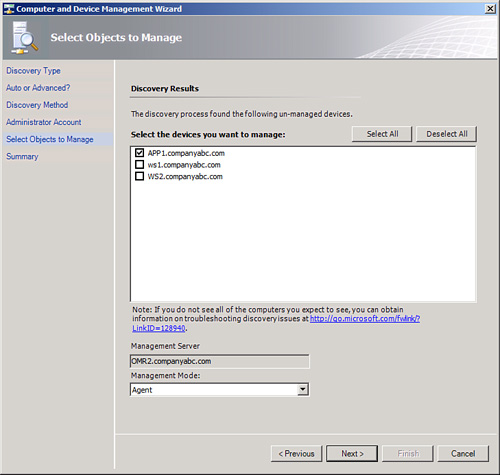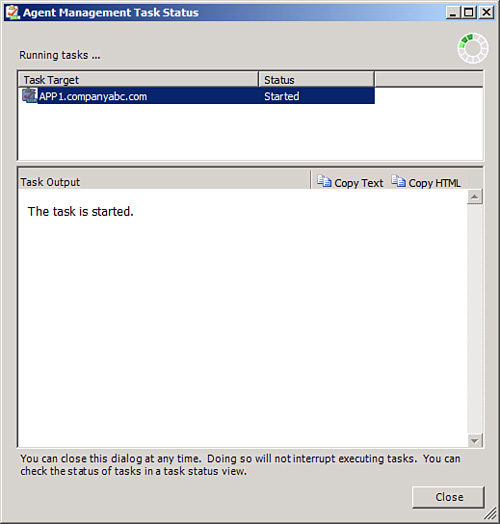Deploying OpsMgr Agents
OpsMgr agents are
deployed to all managed servers through the OpsMgr Discovery Wizard, or
by using software distribution mechanisms such as Active Directory GPOs
or System Center Configuration Manager 2007. Installation through the
Operations Console uses the fully qualified domain name (FQDN) of the
computer. When searching for systems through the Operations Console, you
can use wildcards to locate a broad range of computers for agent
installation. Certain situations, such as monitoring across firewalls,
can require the manual installation of these components.
The Discovery Wizard
can discover and configure monitoring for Windows computers, UNIX/Linux
computers, and for Network devices. It pushes agents to Windows and
UNIX/Linux computers, if the proper rights are provided such as an
account with local administrator rights or a root account.
To install domain member agents using the Discovery Wizard, follow these steps:
1. | Launch the Operations Console and select the Administration section.
|
2. | Right-click on the top-level Administration folder and select Discovery Wizard.
|
3. | Select the Windows computers and click Next.
|
4. | Select Automatic computer discovery and click Next. This scans the entire Active Directory domain for computers.
|
5. | Leave the Use selected Management Server Action Account and click Discover. This starts the discovery process.
|
6. | After
the discovery runs (this might take a few minutes), the list of
discovered computers displays. Select the devices that should have
agents deployed to them, as shown in Figure 1.

Note
The list will
include only systems that do not already have agents installed. If a
computer has an agent installed, the wizard excludes it from the list of
devices.
|
7. | Click Next.
|
8. | Leave the Agent installation directory and the Agent Action Account at the defaults; then click Finish.
|
9. | The
Agent Management Task Status window appears, listing all the computers
selected and the progress of each installation. As shown in Figure 2, the APP1.companyabc.com agent installation task started.

|
10. | Click Close when the installation completes.
|
Even if the window is
closed before the installs complete, the results of the installs can be
viewed in Task Status view in the Monitoring section of the Operations
Console.
The agent deployment
is efficient, and a large number of computers can be selected for
deployment without any issues. The agents start automatically and begin
to be monitored as they are discovered.
After installation, it
might be necessary to wait a few minutes before the information from the
agents is sent to the management server.
During the next few
minutes after installation, the agent contacts the management server and
establishes a mutually authenticated, encrypted communication channel
with the assigned management server. If the agent was pushed through a
software delivery system such as System Center Configuration Manager
2007, the agent determines the management server through AD integrated
discovery.
The agent downloads
rules to discover the various applications and components it’s hosting,
enabling the correct application-specific management packs to be
applied. This discovery process runs periodically to ensure the correct
rules are always applied to the server.